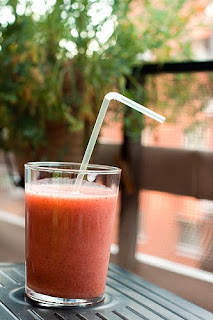Case Study:
Successful Acupuncture Treatment for Peripheral Neuropathy
As a Sequela of Chemo-Therapy
I have been treating this patient weekly with acupuncture following a total hysterectomy due to endometrial cancer. After the first month of treatment the patient (let’s refer to her as Gwen) began a 6 cycle course of chemo-therapy, administered at 3 week intervals. Gwen responded well to acupuncture, and the side effects of chemo were minimal: fatigue, headache, diarrhea, sensation of heat in the chest and throat.
After the forth chemo treatment Gwen began reporting that the tips of her fingers and toes felt slightly numb. Peripheral neuropathy is a known side effect of chemo-therapy. As the symptoms were mild, and other side effects of the chemo therapy were more prevalent, especially fatigue, I continued addressing the other symptoms and did not begin treating the neuropathy at this point.
After chemo treatment #6 Gwen began to notice the neuropathy in the balls of her feet and then traveling up into the ankles. Gwen’s healthcare practitioners told her the chemo-induced neuropathy is due to disintegration of the myelin nerve sheaths, and is often irreversible. Obviously Gwen did not like this prognosis and asked me if the neuropathy could be addressed with acupuncture.
I was concentrating on the fatigue, low hemoglobin and platelet counts, but added in a few points to the treatment to address the neuropathy. This was acupuncture treatment #20.
The following week Gwen began preparations for radiation treatment one month later. However, the neuropathy was her chief concern.
I do a style of acupuncture called Balance Method ™. With this style we do not needle the affected area directly. To treat the feet, we place the acupuncture needles in the hands. I used what we call a ‘shotgun’ approach, needling the upper limbs from the elbows to the fingers. I used the three yang meridians on the right and the three yin meridians on the left. One week later Gwen noted that the neuropathy “is more concentrated in the feet and ankle area, both dorsal and ventral, not as much in lower leg now”.
I repeated the acupuncture treatment, but this time only needling from the wrists to the fingers. The following day Gwen noted, “Numbness still in two feet, but seems a little better, mainly in toes and just in foot, not ankle or lower leg. Notice a buzzing in left foot, almost like electricity.”
I repeated the last treatment and added Zheng Gu Shui, a Chinese patent, alcohol based liniment that has herbs which improves blood circulation. I applied the liniment to the affected area, wrapped her feet in a towel and placed a TDP heat lamp over the bundle. I have continued the Zheng Gu Shui wrap on all subsequent treatments. I also began needling the sensory line on the scalp, which targets neurological issues. During the treatment Gwen reported increased sensation in the feet. The following day Gwen noted, “Feet feel better after acupuncture. . . Feel more neuropathy in foot but now not so much in leg.”
I repeated the treatment the following week. The next day Gwen reported, “Neuropathy seems slightly better. More in foot with very little in ankle.” Again I repeated the treatment one week later. Several days after the treatment Gwen notes, “Neuropathy is mainly in the feet, top and bottom”.
At this point Gwen began a series of five semi-weekly radiation treatments. I continued the weekly acupuncture treatments addressing the neuropathy. Several days after the acupuncture treatment Gwen notes “ Maybe feel more on bottom of the feet”. At this point I added e-stim (electrical stimulation - a battery pack is connected to wires with alligator clips that attach to the needles to add additional stimulation) to the scalp needles. Gwen reported an electric vibration sensation two days after treatment. She requested that I discontinue the e-stim with the acupuncture treatment.
After this last treatment (#10 for the neuropathy), Gwen finished the course of five radiation treatments with little to no side effects. Several days after neuropathy treatment #10 Gwen noted “neuropathy in feet from toes to middle of the foot”. Later that week Gwen notes “Feet feel a bit stiffer in toes and in the bottom of the foot”. After neuropathy treatment #11 the affected area had further reduced to the ball of the foot to the toes, top and bottom (plantar and dorsum). After treatment #12 Gwen noted, “Neuropathy is mainly manifested in feet, felt underneath ball of foot (metatarsal area) and toes.”
After two additional treatments Gwen reported the affected area was in the toes, and that they felt tight and stiff. At this point I added an internal, granulated herbal formula to strengthen the body from the aftermath of seven months of surgery, chemo and radiation treatment, address chronic rhinitis and the neuropathy. Gwen tolerated the herbal formula without any side effects.
Neuropathy treatment #15: Gwen reports decreased paresthesia: she feels a prickly sensation with pressure on the ball of the foot, bilaterally. She describes her symptoms mainly as tightness in the toes, second and third toes and plantar surface of the feet are primarily affected. Accordingly I changed the acupuncture in the hands. I needled the palmar aspect only, distal to the transverse palmar creases and in the fingers to the second metacarpal, to ‘mirror’ the balls of the feet and toes. As the treatment is uncomfortable I have not needled the tips of the fingers, distal to the second metacarpal joint.
This patient’s treatment is in progress. This is her status after one course of acupuncture treatment for neuropathy. KB











